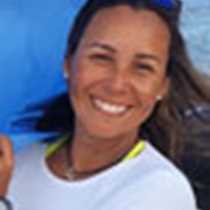Floreana Island
Floreana is located in the south of the Galápagos archipelago. It is one of the inhabited islands and therefore it has a very rich human history. Floreana was first inhabited by a Welshman called Patrick Watkins, an obscure character who declared himself the King of Floreana Island. His reign lasted for two years, after which time he left for the mainland. After Patrick, other people came to settle in this island, but many of them were unsuccessful. Nowadays, the total number of Floreana settlers is no more than a 100 people.
Our first land visit to Floreana today was the famous Post Office Bay. In this very spot, an old-fashioned mail system has been maintained since 1793, when Captain Colnett, a British whaler, first established it. Mail was placed in a barrel to be picked up by homebound ships to be then hand-delivered back in Britain or the US. Our guests this week were very keen on maintaining this tradition alive, and many of them collected lots of postcards from the barrel today!
A little later, the next activity of the day took place at Champion Islet, where our keen snorklers experienced a wonderful time with the playful young sea lions of this area. The sun came out, the waters were clear and the fish and sea creatures were abundant. We couldn’t ask for more!
Afterwards, there was a chance for an exploration by Zodiac around Champion, to search for the rare Floreana mockingbird. This endemic bird used to be abundant on the island of Floreana, but its population was decimated by the introduced feral cats. Now they survive on the islets off Floreana, secured by the surrounding seas.
After lunch, our fearless kayakers got a chance to admire the landscapes along the bay of Punta Cormorant at their own peaceful pace. They certainly enjoyed it!
Our walk this afternoon started on the greenish beach of Punta Cormorant. Behind the olivine sandy beach where we landed at was a group of Greater Flamingos, filtering the calm waters of a brackish lagoon with their specialized bills. This resident species accounts for around 500 individuals, and its bright pink color is simply outstanding in this kind of habitat. Along the way to the “flour beach”, we stopped to admire a little Galápagos flycatcher who kept busy looking for dinner. The colors of the afternoon were simply perfect: at some point we were all lucky enough to appreciate a bright, almost-full moon rising over a tuff cone and the yellow sun setting at the other end of the beach. It was time to return on board the National Geographic Islander. Floreana was a real treat!
Floreana is located in the south of the Galápagos archipelago. It is one of the inhabited islands and therefore it has a very rich human history. Floreana was first inhabited by a Welshman called Patrick Watkins, an obscure character who declared himself the King of Floreana Island. His reign lasted for two years, after which time he left for the mainland. After Patrick, other people came to settle in this island, but many of them were unsuccessful. Nowadays, the total number of Floreana settlers is no more than a 100 people.
Our first land visit to Floreana today was the famous Post Office Bay. In this very spot, an old-fashioned mail system has been maintained since 1793, when Captain Colnett, a British whaler, first established it. Mail was placed in a barrel to be picked up by homebound ships to be then hand-delivered back in Britain or the US. Our guests this week were very keen on maintaining this tradition alive, and many of them collected lots of postcards from the barrel today!
A little later, the next activity of the day took place at Champion Islet, where our keen snorklers experienced a wonderful time with the playful young sea lions of this area. The sun came out, the waters were clear and the fish and sea creatures were abundant. We couldn’t ask for more!
Afterwards, there was a chance for an exploration by Zodiac around Champion, to search for the rare Floreana mockingbird. This endemic bird used to be abundant on the island of Floreana, but its population was decimated by the introduced feral cats. Now they survive on the islets off Floreana, secured by the surrounding seas.
After lunch, our fearless kayakers got a chance to admire the landscapes along the bay of Punta Cormorant at their own peaceful pace. They certainly enjoyed it!
Our walk this afternoon started on the greenish beach of Punta Cormorant. Behind the olivine sandy beach where we landed at was a group of Greater Flamingos, filtering the calm waters of a brackish lagoon with their specialized bills. This resident species accounts for around 500 individuals, and its bright pink color is simply outstanding in this kind of habitat. Along the way to the “flour beach”, we stopped to admire a little Galápagos flycatcher who kept busy looking for dinner. The colors of the afternoon were simply perfect: at some point we were all lucky enough to appreciate a bright, almost-full moon rising over a tuff cone and the yellow sun setting at the other end of the beach. It was time to return on board the National Geographic Islander. Floreana was a real treat!




